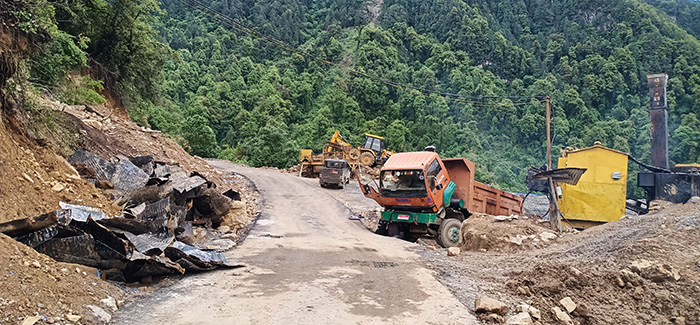Phurpa Lhamo | Gasa
Elderly Layaps (people of Laya) had never thought that a motorable road would connect their village, located at an altitude of 3,800mts, at least in their lifetime.
For many, a road till the Gasa dzong or the dzongkhag headquarter was the best bet.
Passing Tshering, 53, who as a young Layap had traversed the five-day road between Punakha and Laya several times with his horses and yaks. He recalls getting stuck in the snow for a few days with his yaks. He was 25 years old then.
“I never thought that the government would decide to bring road to Laya. So much has changed since.”
Today, with 27km paved road from Gasa towards Laya, the realities are changing. About 3km of the 27km road has been blacktopped today.
Going to Gasa for about five times a year to fetch goods every year was normal for almost all Layaps, according to Kinley Dorji, who owns a shop in Laya. Because of the long winter, highlanders have to stock up food and essential items.
“With the road connectivity, it is much easier for us. We do not have to struggle so much,” Kinley Dorji said. “To carry essential items, nearly 150 to 200 horses are used,” said Kinley Dorji. About 20 horses die every year along the journey. Weather and terrain are unforgiving.
With the 27km road connectivity, fetching luxury items has become easier for the people of Laya. Kinley Dorji said that nearly 40 percent of people in Laya owned a washing machine.
While it was impossible to carry a washing machine to Laya in the past, today with the walking distance shortened, people carry the machine on their backs to bring the item home.
The road has reached Tongshida, which is about a half-day’s walking distance for many visiting Laya. For Layaps, both men and women can cover that distance in four hours even with loads.
The construction of Gasa to Laya road began in the 2012-2013 financial year. Gasa dzongkhag’s engineer, Choki, said that there remained 14km stretch to complete the project. The project has arrived and stopped at Tongshida.
Choki said that the construction of a bailey bridge at Koina, 23km from Gasa, was also delayed. He added that fabrication works has to be done in India as Bhutan lacked factories to manufacture materials and lacked expertise, which has delayed the work.
“People can travel in winter because the river is small, but there will be problems in summer,” he said.
The project worth Nu 72 million will continue for around five years. But the project’s main challenges are short working months and the risky landscape.
“We work for around four months during winter and we cannot work in summer. As we move to Laya, the terrain is also rocky in nature,” Choki said.


